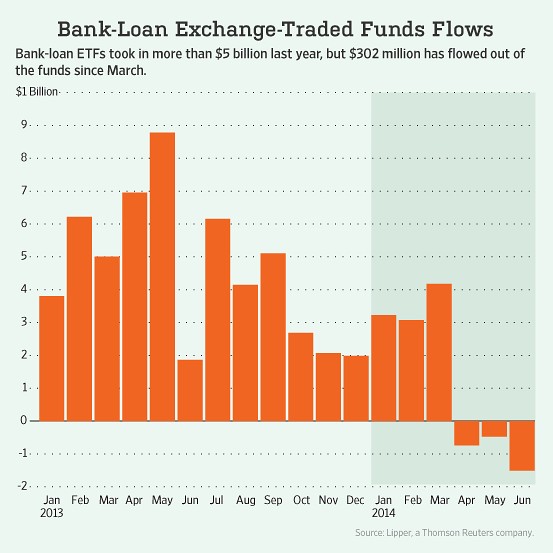Bank Loan Funds
Post on: 9 Май, 2015 No Comment

Bank Loan Funds (BLF) are mutual funds that buy loans made by banks or other financial institutions to companies. These bank loans are usually senior secured debt and are mostly rated below investment grade because the borrower’s ability to repay may be viewed as speculative. Such loans are used for general corporate purposes as well as to refinance debt and fund acquisitions, leveraged buyouts or recapitalizations.
BLFs are also called floating rate funds because the underlying loans typically pay interest based on a floating rate. A floating rate is not a fixed rate, but rather a rate that adjusts periodically based on a publicly available, short term, referenced interest rate. A BLF’s income may not match the underlying reference rate due to delayed rate reset periods, as well as interest rate caps and/or floors.
A bank loan’s reference interest rate may be the London Interbank Offering Rate (LIBOR) which is the interest rate at which banks borrow unsecured funds from other banks in the London wholesale money market; or Prime, which is the interest rate charged by US banks to their most creditworthy customers. The floating rate feature adjusts with changing market conditions and may help keep a BLF’s trading value more stable than a typical bond fund.
Bank loans usually have a term between 5 to 7 years, are secured by collateral, and can be prepaid at any time. Since these loans are typically rated below investment grade, they have meaningful credit risk and are often referred to as speculative or junk rated debt.
Credit risk, a borrower’s inability to pay interest and principal, may be somewhat mitigated by a loan’s seniority in its capital structure which means that, in the event of bankruptcy, such loans are repaid before certain other debt or common stock. However, factors adversely impacting the market value of these securities will adversely impact a BLF’s net asset value.
BLFs are not money market funds and are not guaranteed by banks or the Federal Deposit Insurance Corporation (FDIC). BLFs and other floating rate funds should not be considered as alternatives to money market funds, or as cash alternatives or cash equivalents.
Morningstar tracks the returns of BLFs offered by a number of mutual fund companies. Since BLFs involve potentially greater risk, investors should carefully consider their risk tolerance and investment objectives before investing.

Bank Loan Funds/Floating Rate Funds
Benefits/Risks
Benefits
- Income generating assets which are less sensitive to the negative impact of rising interest rates.
- Seek to provide a high level of current income.
- Mutual fund structure provides daily liquidity and diversification across borrowers and industries.
- Provide access to an asset class normally available only to institutional investors.














